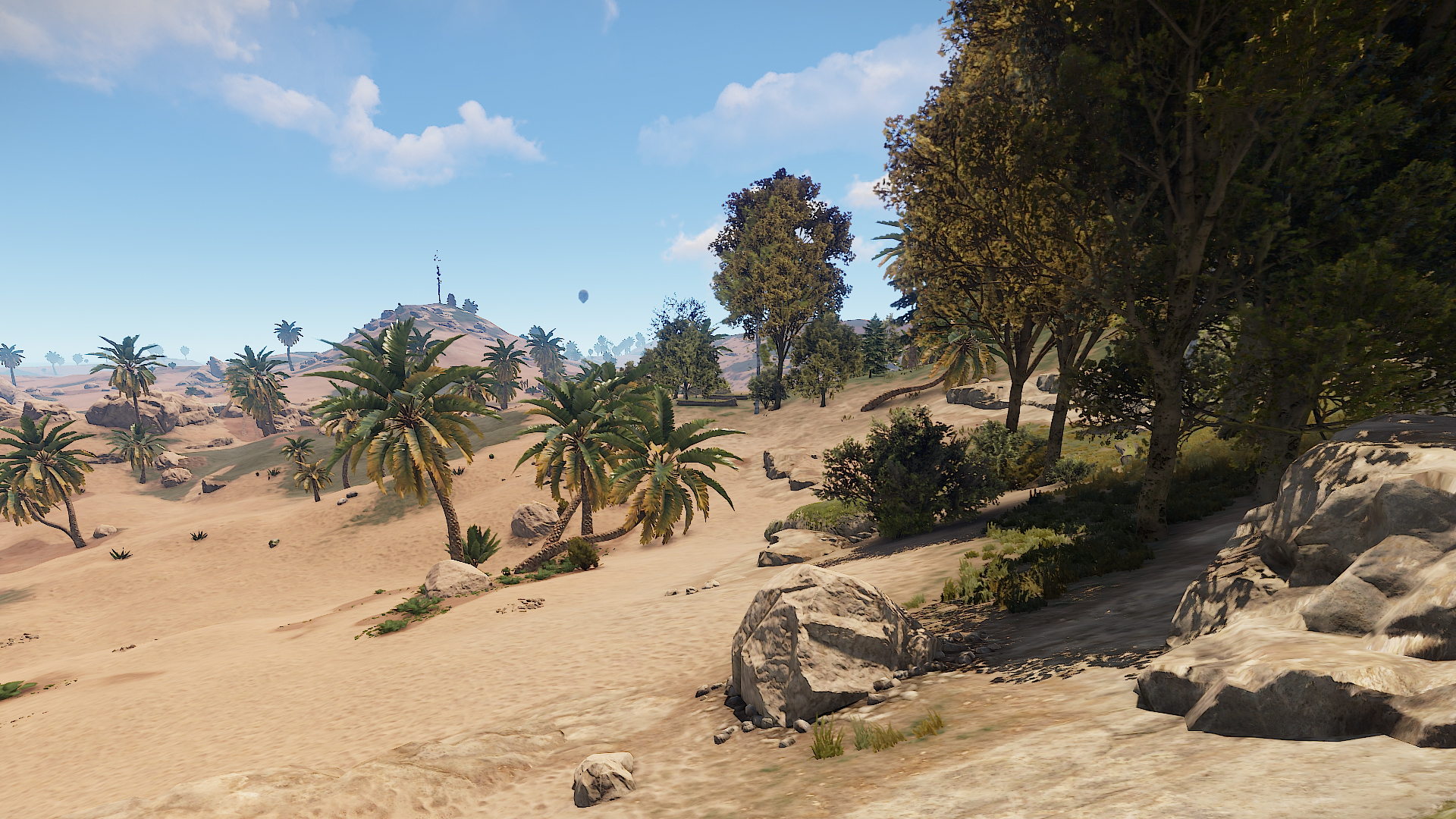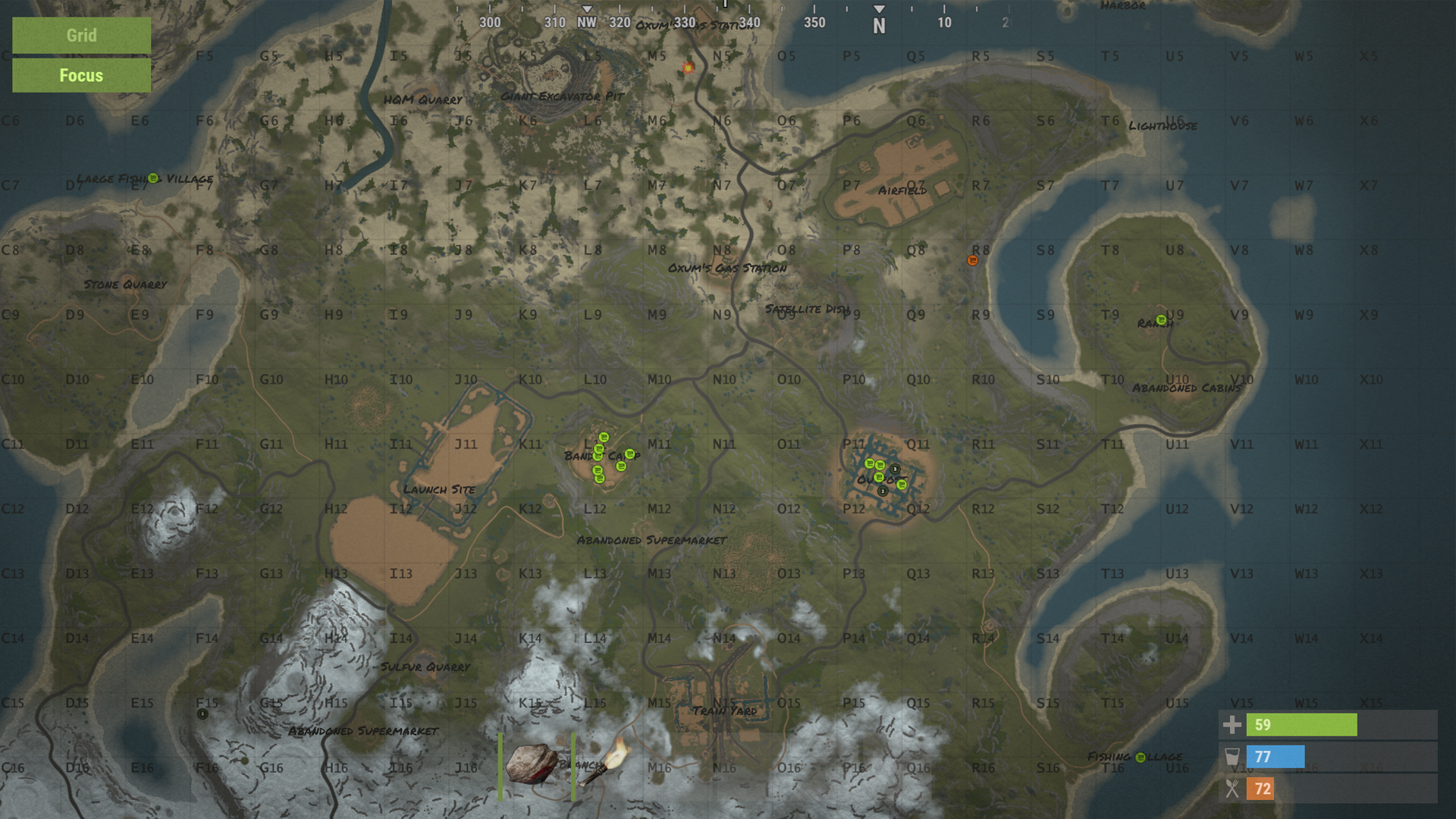Rust map guide - all the different kinds and characteristics explained
Should your Rust map be Procedural or Custom? Barren or Premade? Hapis, or Savas?

The Rust map is arguably the most important aspect of the game, as it will largely influence the type of experience you have in this world of survival. Depending on how the landscape is laid out, you'll have different opportunities to explore, scavenge, and build, so the Rust map you use is of great interest. You even start a session with a map-based choice – do you want to use the default randomized procedural map, or something entirely different?
Once the choice is made, you will have to find your way around the world you’ve chosen. Each Rust map is full of landmarks, towns, rivers, roads, and even shops. On top of that, most maps feature all three biomes while also being different in terms of fauna and vegetation. Sounds complicated? No worries, here’s everything you need to know about the islands of Rust. We've also got some Rust tips and a guide to finding Rust food if you need more help.
How to use the Rust map

Whichever Rust world you choose to play in though, the basics are the same. Press G to open up your current map once you’re in a game. You can see the different biomes, roads, rivers, lakes, and Monuments. Every map is an island, and you will always spawn on the beach.
One of the most useful things about the Rust map is the grid overlay. Every row has a number and every column has a letter, which is very handy if you want to let another player know you’re in E6. You can activate or deactivate the grid overlay by clicking on ‘Grid’ in the upper left corner of the map. If you’re playing in a team, you can see your teammates appear on the map as green dots. Your own location is a yellow dot.
Finally, you should look out for shops and vending machines on the map. By hovering over the shop signs, you can see what they’re selling and what they want in return. Although the shops located near Monuments usually belong to NPC’s, players can also create shops and vending machines. The player shops are often just called ‘A Shop’ and are found in more remote areas.
The four different types of Rust map

If you take a look at the map category directly below the server name before starting a game in Rust, you can see that there are four different map types. By far the most common are the Procedural Maps; they are generated from a random “seed” (number) chosen by the creator of the map. The locations of features such as biomes, monuments, and roads, are all random. No two maps are the same.
As the name suggests, the Barren maps feature barren landscapes with only trees and rocks. All the decorative parts of the landscape are removed, leaving only the things that have a gameplay purpose. Although it looks less nice, the Barren maps have a better performance than Procedural maps. A Barren map can also give you a more intense PvP experience.
The Custom maps are made by players. You can only find them under the Community and Modded server tabs. As none of the normal rules apply to them, you can find very different map designs here. For example; some consist of deserts only, have a worldwide tunnel system, or feature a massive volcano. It can be a lot of fun to try these out.
Finally, there are the two Premade Maps; Hapis Island and Savas Island. Unlike the Procedural Maps, the layouts of these maps are fixed, not randomized. The obvious advantage for the player is the possibility to learn everything about the island, regardless of server choice. You can come back years later, enter a different server, and the world will be the same.
Hapis Island & Savas Island

Although they are both Premade, Hapis Island and Savas Island are very different worlds. Hapis Island has a very big map with roads and grasslands near the coastline and a large, mountainous area in the middle. Due to its size, Hapis Island is usually seen as less competitive. Many solo players are especially fond of it for that reason.
The Savas map, in contrast, is meant to be an intense PvP map. This small island is pretty unique when compared to other Rust maps, not in the least because of its size and symmetry. The idea is that you start in the lower region, and then fight your way up to the hilltop, where you’ll find a Rad Town full of valuable loot. The higher availability of resources and crates encourages PvP combat and decreases the time needed for farming. The crates on this map also contain more weapons.
Rust Biomes

Depending on size, Rust maps can feature up to three different biomes:
- Temperate: this is the most common biome in Rust. It is also the best place to start your first base. The temperate biome has forests where you can easily gather wood, while the grasslands are very suitable for gathering rocks and hemp plants. One of the greatest advantages though, is that the temperature will hardly harm your (initially naked) character.
- Desert: although it leaves the player exposed, the desert is a great place to search for barrels and loot boxes. There are often Rad Towns too. Furthermore, animals tend to spawn more often in the desert than in other biomes, so this is a great place to go hunting. Be mindful of the temperature though: you can easily get overheated during the day or freeze to death during the night.
- Snow: like the temperate biome, the arctic region can grow trees, but it is usually a more barren landscape. This is the best place to look for metal. Do remember to take warm clothes with you (like the burlap set) and a campfire.
Rust Monuments

The abandoned post-apocalyptic sites are some of the most important places you will encounter while roaming through the world of Rust. These so-called ‘Monuments’ are all that remains of the old civilization. For you, they fulfill a role as sources of valuable loot. Certain types of Monuments are also referred to as Rad Towns, landmarks, or dungeons.
The Monuments are easily recognizable on your Map. Their terrain is brown, and you will see the name in black letters written over it. The smaller Monuments include Gas Stations, Supermarkets, Abandoned Cabins, Warehouses, and Water pumps. Naturally, looting them is not as rewarding as looting a big Monument, but it’s safer and faster.
The biggest and most rewarding Monuments are the Airfield, the Dome, the Power Plant, the Military Tunnels, and the Launch Site. If you see any of these Monuments on your map, you should definitely pay a visit as they’re full of loot crates. Unfortunately, many of the big Monuments are also Rad Towns, meaning that they are irradiated. You can’t see whether a terrain is irradiated or not just by looking on your map, but you will notice a crackling noise and a change in vision if you get close. If that happens back off until you can deal with it and survive.
And with that, you are ready to explore every post-apocalyptic Rust island you can find!
Want to try an even more surreal survival game? Check out how to pee, poop and vomit in Scum. Seriously.
Weekly digests, tales from the communities you love, and more
I’m a freelance journalist who (surprise!) kind of has a thing for videogames. When I’m not working on guides for GamesRadar, you can probably find me somewhere in Teyvat, Novigrad, or Whiterun. Unless I’m feeling competitive, in which case you should try Erangel. You can also find my words on PCGamesN, Fanbyte, PCGamer, Polygon, Esports Insider, and Game Rant.



